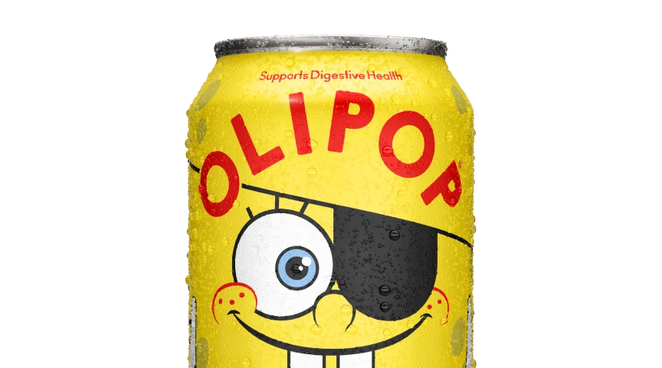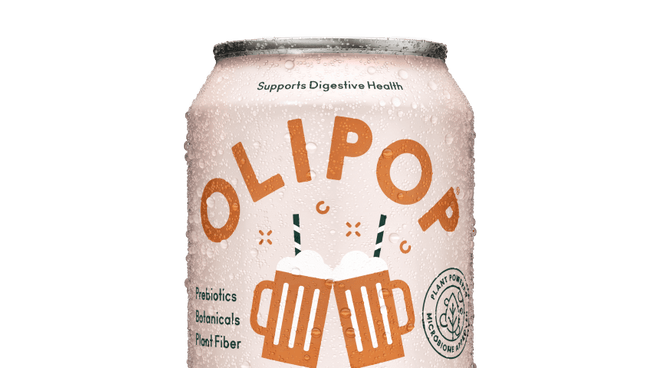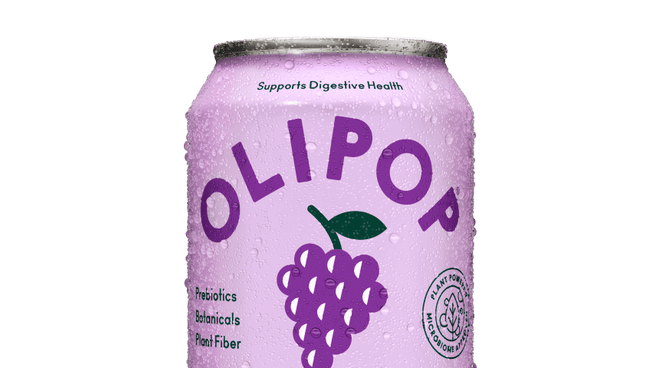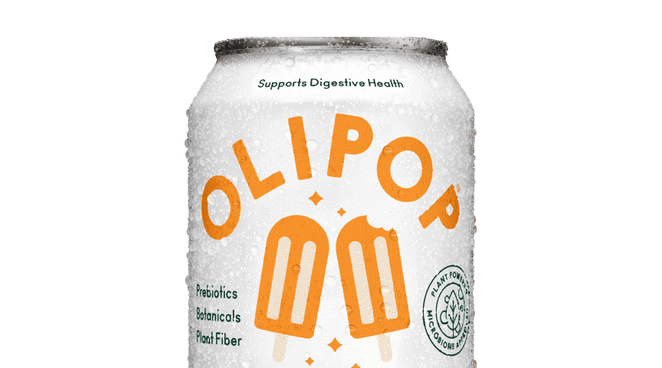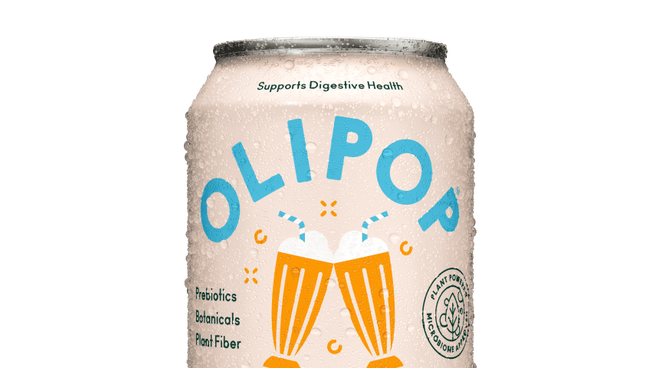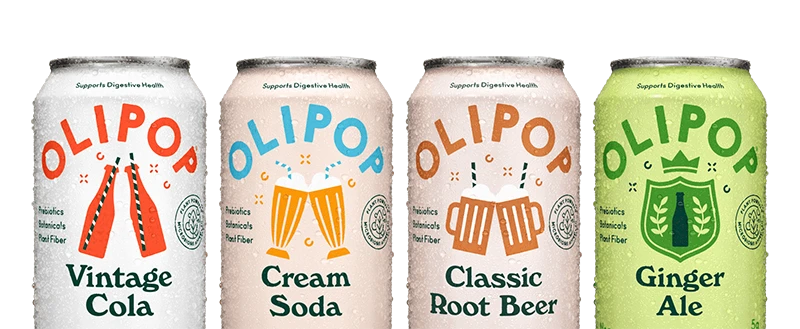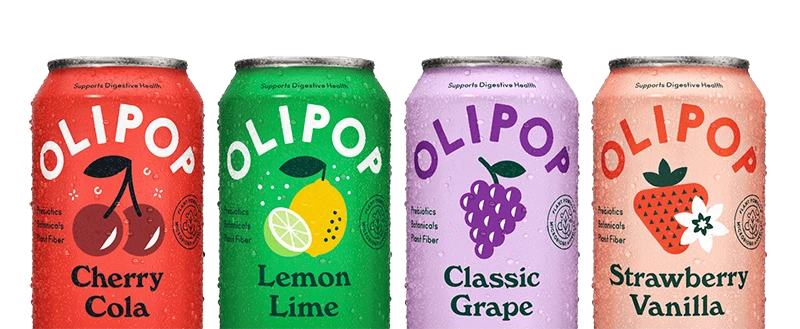Editor's Note: This article is reviewed by Lauren Manaker MS, RDN, LD, a registered dietitian and a paid contributor to OLIPOP. She specializes in digestive health and reviews OLIPOP content for scientific accuracy.
For some, fiber is not the sexiest food group. After all, who wants to talk about stool bulk, occasional constipation, and digestive health problems? Well, besides us, of course. But here’s the thing about fiber: even if you think you're getting enough of it in your diet, there’s a good chance you aren’t. Over 90% of adults don’t get enough fiber... and it can have some pretty serious consequences for your health.[1] That’s because we have fiber to thank for a healthy digestive system, weight management, heart health, among many other benefits.[2]
Luckily, you have a lot of delicious options, including OLIPOP, for adding fiber to your diet. But how do you know what foods have fiber? Here's how to check the back nutrition label to spot high-fiber foods.
What Is Fiber?
Fiber is a healthy complex carbohydrate that your body cannot digest.[3] You might be wondering: why would I eat something that my body can’t break down? Well, as fiber passes through your body it aids digestion, regulates blood sugar levels within the normal range, and keeps you feeling full and satisfied for longer.[4] It plays such an important role in your body’s metabolism that a diet low on fiber could lead to weight gain, occasional constipation, blood sugar fluctuations, nausea, or exhaustion.[5]
Soluble vs. Insoluble Fiber
There are two different types of dietary fiber that your body needs: soluble and insoluble. Each plays its own role in supporting your body’s healthy digestive processes.
Recommended Daily Fiber Intake
The 2020-2025 United States Department of Agriculture (USDA) Dietary Guidelines for Americans recommends the below fiber intake for adults:[1]
- Women: 22-28 grams of fiber per day
- Men: 28-34 grams of fiber per day
The Fiber Gap
Based on the USDA’s guidelines, we should all be getting around 25-30 grams of fiber every single day. Here’s the problem: most American adults think they are getting enough fiber but in reality, more than 90% of women and 97% of men don’t get anywhere near that recommended amount.[1] The average fiber intake for most Americans is 15 to 16 grams of fiber per day, about half the recommended intake.[6]
This means that the majority of the U.S. population is not getting enough fiber. This is considered a public health concern by the USDA given that low levels of fiber are a contributing factor to obesity and other major health concerns.[2] [6] [7]
Look for Dietary Fiber on the Nutrition Label
Checking for “Dietary Fiber” on the nutrition label under “Total Carbohydrate” is the biggest step you can take in the fight against the fiber gap. Here's what that looks like on an OLIPOP can:

It's important to check the back label because (unlike OLIPOP) some foods, like those labeled with “whole grains”, might sound like they have a lot of fiber in them when in reality they might not have as much as you think.
Unfortunately, according to some studies, only 1 in 4 consumers check the back label of foods before dropping them into their cart.[2] Let’s change that statistic by making the back label check a part of your decision-making shopping process!
How Much Fiber Should I Look For?
So what should you look for when reading the back label? Let’s start with the % Daily Value (DV). The DV tells you the percentage of how much of your total daily value of that nutrient is in the product.[8]
The daily value recommendation for fiber is 28 grams, meaning you should have at least this amount of fiber throughout your day.[8] A product that has 28 grams of fiber has 100% of your daily value. A general rule of thumb is that 5% DV or less of a nutrient per serving is low while 20% DV or more is high.[8] Given our diets are low in fiber, the higher the % daily value of fiber, the better.
It’s important to note that nutrient amounts refer to the size of the serving. So always check the serving size when comparing products to know exactly what you’re getting with what you plan on eating or drinking.
When it comes to total grams, the Food and Drug Administration (FDA) considers between 2.8 and 5.32 grams a “good” source of fiber and 5.6 grams or higher an “excellent” source of fiber.[2] [9] Although, we think you can aim even higher! This is where OLIPOP comes in...
OLIPOP and the Fiber Gap
On the nutrition label for OLIPOP, you’ll see that our soda is high in dietary fiber. We include fiber and other health-supporting ingredients because we know it can be challenging to get enough fiber in your diet. This is evidenced by the fact that 67% of people think they are consuming enough fiber when over 90% of us aren't.[2]
There’s a clear disconnect between the foods we are eating and the foods we should be eating. Unlike our ancestors, who were hunters and gatherers, you aren’t wandering through the woods picking fruits and vegetables high in fiber and other healthy nutrients. Today, we walk down the grocery store aisle and have access to so many different types of foods, many of which aren’t so great for us. And the truth is, most of us have a hard time figuring out what’s good and what’s bad and how to swap in more of that good stuff.
That’s why at OLIPOP we went wandering and digging, like urban hunters and gatherers, trying to solve this puzzle of healthy eating in a modern world. And that’s exactly how we wound up making OLIPOP, a delicious drink designed to bring you all the ingredients and benefits of an age-old diet.
With our fibrous ingredients, every sip of OLIPOP works hard to fuel your microbiome and support your digestive health. We make it easier to make a healthy choice in the modern world without sacrificing delicious taste.
Adding Fiber to Your Diet: The Takeaway
Fiber is an important nutrient in a healthy diet. According to the USDA, women need 22-28 grams of fiber per day and men need 28-34 grams of fiber per day. But unfortunately, most Americans don't get enough. That's why it's crucial to add high fiber foods and drinks (like OLIPOP!) to your diet. How? Check the back label of your products to look for high-fiber foods to add to your cart. And don’t forget to add fiber with every sip of OLIPOP!
Sources
- U.S. Department of Agriculture and U.S. Department of Health and Human Services. (2020, December). Dietary Guidelines for Americans, 2020–2025 (9th Edition). https://www.dietaryguidelines.gov/sites/default/files/2021-03/Dietary_Guidelines_for_Americans-2020-2025.pdf
- Quagliani, D., & Felt-Gunderson, P. (2016). Closing America’s Fiber Intake Gap. American Journal of Lifestyle Medicine, 11(1), 80–85. https://doi.org/10.1177/1559827615588079
- Harvard T.H. Chan School of Public Health. (2019, October 28). Fiber. The Nutrition Source. https://www.hsph.harvard.edu/nutritionsource/carbohydrates/fiber/
- Cleveland Health Clinic. (2021, February 8). Carbohydrates: Types & Health Benefits. Cleveland Clinic. https://my.clevelandclinic.org/health/articles/15416-carbohydrates
- Fries, W. C. (2007, January 1). Is Your Diet Low In Fiber? WebMD. https://www.webmd.com/food-recipes/features/4-warning-signs-your-diet-may-lack-fiber
- Sweat, W., & Manore, M. M. (2015). Dietary Fiber: Simple Steps for Managing Weight and Improving Health. ACSM’S Health & Fitness Journal, 19(1), 9–16. https://doi.org/10.1249/fit.0000000000000091
- U.S. Food and Drug Administration. (2020, March 11). How to Understand and Use the Nutrition Facts Label. https://www.fda.gov/food/new-nutrition-facts-label/how-understand-and-use-nutrition-facts-label
- Shaw, G. (2012, October 31). The Ultimate High-Fiber Grocery List. WebMD. https://www.webmd.com/cholesterol-management/features/fiber-groceries
- 21 CFR 101.54 -- Nutrient content claims for “good source,” “high,” “more,” and “high potency.” (n.d.). https://www.ecfr.gov/current/title-21/chapter-I/subchapter-B/part-101/subpart-D/section-101.54
- Americans can benefit from eating more fiber, as the average adult only eats half the recommended amount of fiber per day.
- A good way to add more fiber to your diet is to make a habit of checking the back nutrition label for "dietary fiber".
- The FDA considers 2.8 to 5.32 grams a "good" source of fiber and 5.6g or higher an "excellent" source of fiber.








